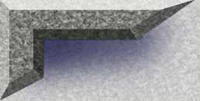How to Handle The " Hyper
Puppy "
Do you think you own the most active puppy in town? Is he on
the move constantly? Is he a furry, four-footed, destruction machine? Are you wondering what you got yourself into? Guess
what, chances are what you actually have is a perfectly normal puppy!!!The young of most every species spend a large part
of their waking time exploring their surroundings and trying out all of the behaviors that they can think of. And with everything
they try, they are learning. Some things they will learn to enjoy and want to repeat, other things will not be enjoyable and
they will not repeat those behaviors. But puppy is always learning. Our job then becomes to provide our puppies with opportunities
to learn behaviors that we want them to repeat.
Your puppy
will learn to perform behaviors you want more quickly if
|
|
-Set
up your puppy’s surroundings to create success. |
|
|
-Provide
plenty of exercise and mental stimulation. |
|
|
-Focus on, and reward, behaviors that you want.
|
Housetraining your puppy is more than just teaching him where
to go potty. Housetraining includes good management—helping puppy not get “into trouble” by blocking access
to temptation. For example: All the items that you would put behind locked doors for a two-year-old human child should be
put behind doors for your puppy. In addition, trash cans should be inaccessible to puppies. Not only to prevent the trash
from being strewn throughout the house, but also to protect your puppy from ingesting items that could be harmful. Clothes,
shoes and other "smelly" human clothes should be put where puppy cannot get to them. The toilet paper cannot be torn to shreds
if you close the bathroom door. Baby gates and barriers should be in place to prevent puppy from having unsupervised access
to your home. If you are either watching puppy or have puppy in a safe place, it will be impossible for puppy to soil the
carpet and eat your family heirlooms.Your interest in this article tells us that you are probably already aware that puppies
tend to be “HYPER!” They have a ton of energy and they need to burn that energy up somehow. If you do not provide
an acceptable outlet, they’ll come up with one of their own.Taking puppy for a walk around the block or through the
park is a great way to exercise puppy. Talk to your veterinarian about how much exercise is safe for puppy at his age. A eight-week-old
Yorkie may tire out walking to the corner. An eight-month-old Dalmatian may need a 2-mile jog! You also need to be sure that
all vaccinations are up to date and puppy is protected from diseases.Another way to exercise puppy is to teach puppy to retrieve
a toy. Retrieving is a game that allows the puppy to do all the running while you sit under a shade tree, drinking an iced
tea! There are other games that will physically and mentally challenged your puppy. Games such as “hide ‘n seek”
are a lot of fun for both you and your puppy. Hide ‘n seek can be played a couple of ways. One is to teach puppy to
“hide his eyes” (stay) and then a family member hides and calls the dog, or you can have puppy “hide his
eyes” and then hide a favorite toy for puppy to find and retrieve. (Until puppy learns to “stay” it’s
OK to gently hold puppy in place while the person or toy is hidden. Also, always play hide ‘n seek with you hiding,
and puppy finding. It would be ill advised to teach puppy to hide from you!) Hide ‘n Seek encourages good behaviors
like come, find, and retrieve.
Don't ask “How do I get puppy to stop
Another commercial toy that can keep your puppy entertained for
some time is a Buster Cube(r)—a large plastic toy with chambers in it that you load with dry food. As the dog rolls
the cube around, it spits out a piece of food every once in a while. With this toy, a portion of your dog’s regular
meal will be fed via the cube. You reduce the amount at “meal time” so as not to create a rolly polly puppy.Spend time teaching your puppy the basic commands of sit, down and come. That way
when puppy is doing something unacceptable you can change the behavior into something more appropriate. An example: a dog
that is responding to a sit command IS NOT jumping on your guests!The
key to “Handling the HyperPuppy” is management. By preventing inappropriate behaviors, burning off excess
energy, relieving boredom and teaching appropriate behaviors you too can learn to enjoy that bundle of fur and he can grow
into that well behaved adult that you pictured when you decided to get a Puppy Pal!

|

